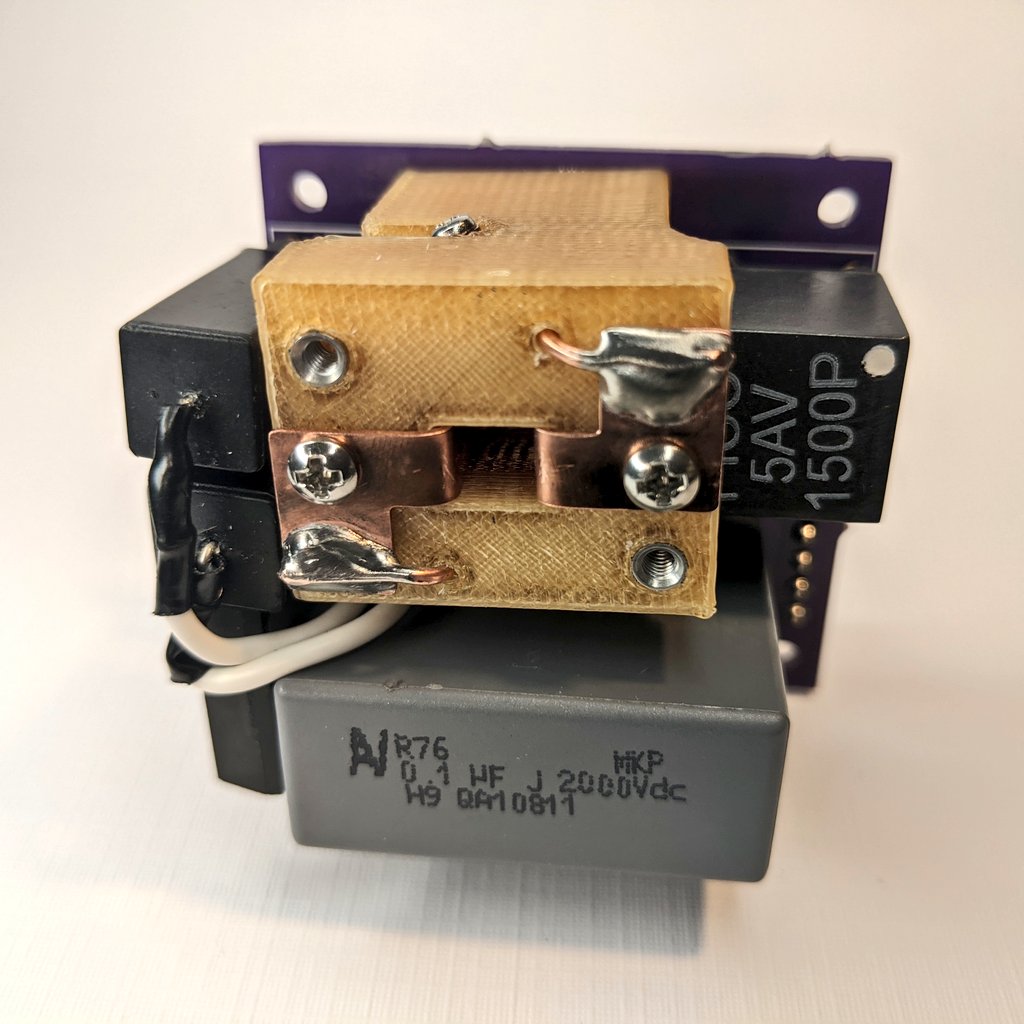Last night I ran the third ignition test of the AIS-EPPT1 micro pulsed plasma thruster. unfortunately, this was the most unsuccessful test of the EPPT1 yet. A couple of weak spurious pulses, followed by failure of the thruster due to arcing and shorting through the 3D printed housing. Based on testing to date, there are implications going forward.
The major goal of the test was to qualify the new design changes for the V2 EPPT1, which included a brand new thruster housing design, anode-side triggering, improved fuel dimensions, reduced electrode spacing, narrower electrode gap, and embedded igniter connection.

It has become obvious that for this particular application, 3D printing the housing has plagued thruster operation. Arcing has consistently occurred through the layers and print voids, eventual shorting due to charring of the plastic. While it has worked great for the ILIS1 so far, for PPTs it has not. However, even solving this issue with FDM printing, or going with some SLA resin that has minimal outgassing, there is still a major, fundamental limiting factor that goes beyond just getting PPTs to operate reliably at this level.
Even if the thruster worked perfectly, unfortunately the fact is that sub-Joule PPTs are just not competitive tech compared to other options at this scale, suffering from significantly lower thrust/power and ISP with other contenders such as VATs and ILIS. While PPTs are a fantastic entry into EP, and do have uses, reviewing all testing, data, and the field as a whole, I just do not think they scale well enough in performance for the PQ level. Even at the Cubesat level, other technologies would still arguably make more sense. I came to earlier realizations of its limits with the gPPT3 development. I thought more power could help solve the issues encountered, as well as bumping out the volume to accommodate extra features, but I don’t think it scales enough still as a whole all things considered. Granted, the EPPT1 electronics so far seem to be an improvement over the gPPT3, but the thruster itself is still not progress. Despite this, the circuit and tests have proven a valuable learning tool pushing the boundaries of PPT scaling at this level.
Reviewing everything, I will probably be retiring PPT efforts as a main propulsion system for nanosats and picosats, focusing more on ILIS, which has significant potential with high thrust/power, ISP, scaling, and overall performance, as well as other new developments in the works. That being said, I will still experiment with PPT development for use as a fully inclusive micro pulsed plasma source as well as test and demo propulsion module to still allow teams to access ultra-low cost and simple propulsion for demo and control tests. I am already making plans to use the gPPT3 thruster head with the EPPT1 electronics and developing it more as the next generation of low-cost demo systems at AIS.
